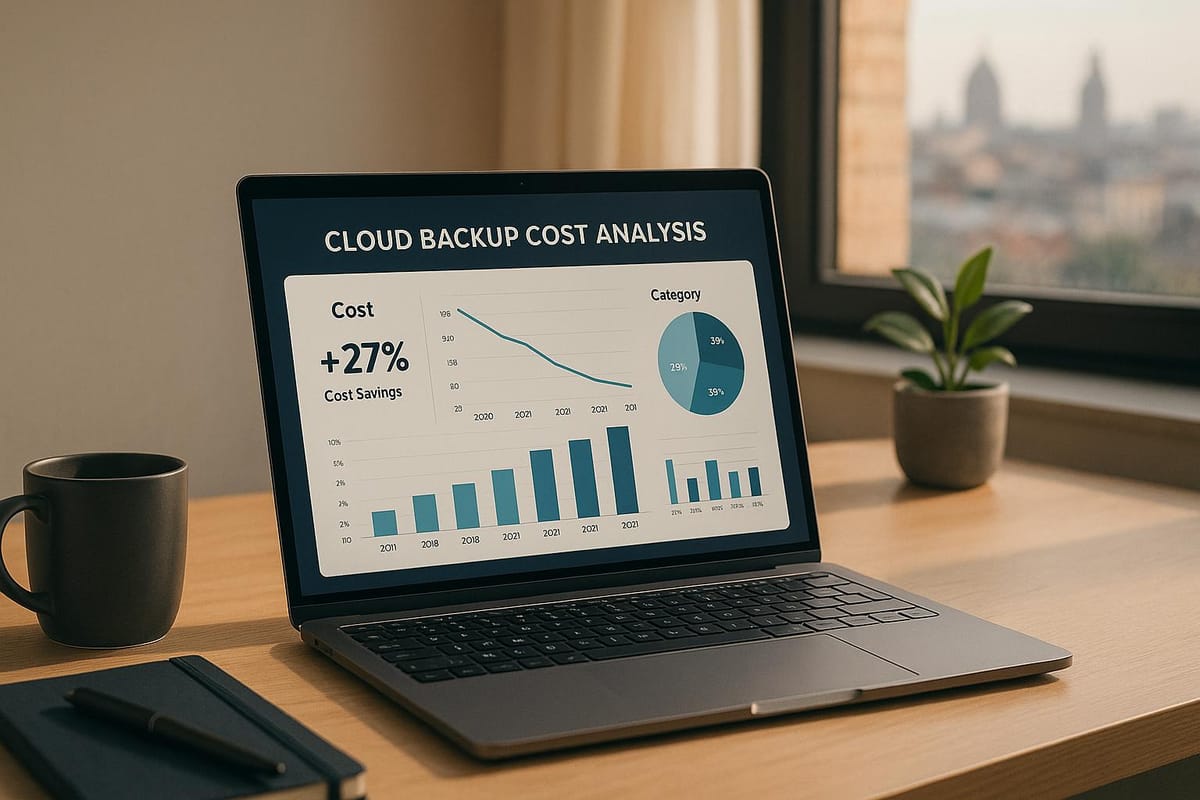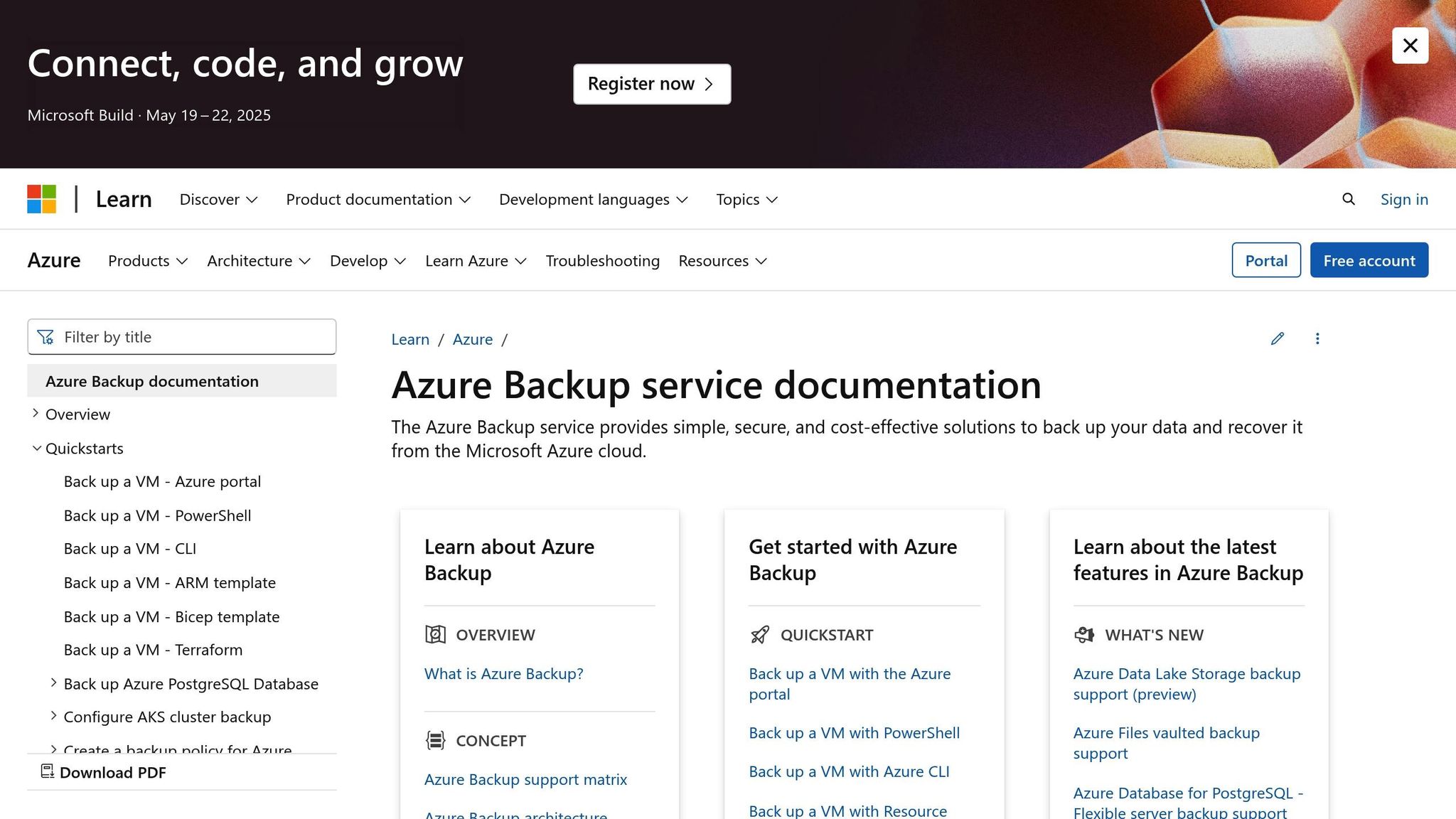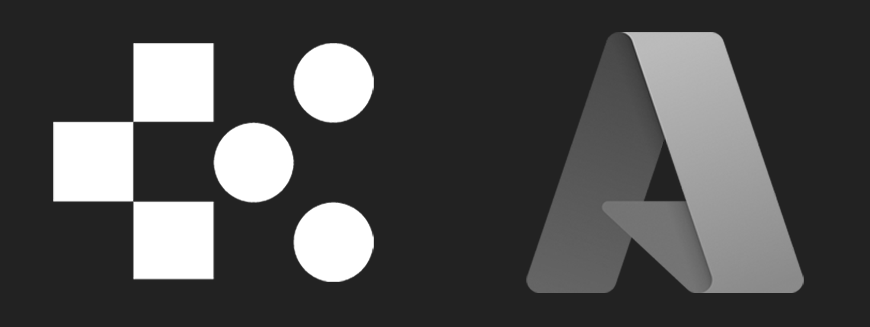Ultimate Guide to Azure Backup Cost Optimisation
Learn effective strategies for optimising Azure Backup costs, from storage selection to automated tiering, tailored for UK businesses.

Azure Backup can protect your data while keeping costs manageable. Here's how UK businesses can optimise their backup expenses:
- Choose the Right Storage: Use Locally Redundant Storage (LRS) for non-critical data (£0.018/GB/month) and Geo-Redundant Storage (GRS) for critical data (£0.0448/GB/month).
- Automate Tiering: Move older data to cheaper tiers like Cool (£0.01/GB/month) or Archive (£0.00099/GB/month).
- Plan Backup Frequency: Adjust schedules to avoid unnecessary backups and reduce storage use.
- Use Reserved Plans: Commit to 1- or 3-year plans to save up to 40% on storage.
- Monitor Costs: Set up alerts and reports to track usage and identify savings opportunities.
Quick Comparison of Storage Options
| Storage Type | Cost (per GB/month) | Best Use Case |
|---|---|---|
| Locally Redundant (LRS) | £0.018 | Non-critical workloads |
| Zone-Redundant (ZRS) | £0.028 | Mid-level protection |
| Geo-Redundant (GRS) | £0.0448 | Critical systems |
| Archive Tier | £0.00099 | Long-term retention (>180 days) |
Optimize your data protection costs with Azure Backup

Understanding Azure Backup Costs
When UK SMBs plan their Azure Backup expenses, there are several factors to keep in mind. Let’s break down the key pricing components and how they influence your backup strategy.
Pricing Options Compared
Azure Backup offers two pricing models, each with its own advantages and cost implications:
| Pricing Model | Benefits | Cost Impact |
|---|---|---|
| Pay-as-you-go | No upfront investment, flexible use | ~£0.020 per GB/month |
| Reserved Capacity | Savings of 20–40% with a commitment | ~£0.015 per GB/month |
| 1-Year Reserved | Moderate-term savings | ~25% cost reduction |
| 3-Year Reserved | Maximum savings | ~40% cost reduction |
For example, if a UK SMB backs up 5 TB of data, monthly costs could drop from about £100 with the pay-as-you-go model to roughly £65–£80 with a one-year reservation. Now, let’s explore how the type of storage impacts overall costs.
Storage Costs by Type
The choice of storage redundancy affects both cost and the level of protection provided:
| Redundancy Type | Cost per GB/Month | Protection Level |
|---|---|---|
| LRS (Locally Redundant Storage) | £0.018 | Single data centre |
| ZRS (Zone-Redundant Storage) | £0.028 | Multiple zones in the same region |
| GRS (Geo-Redundant Storage) | £0.0448 | Backup in a secondary region |
| RA-GRS (Read-Access Geo-Redundant Storage) | £0.0569 | Read access in a secondary region |
For a 1 TB backup, using LRS would cost around £15–£20 per month, whereas GRS could increase that to £40–£50. Your choice of redundancy should align with your organisation's data protection needs and budget.
Long-term Storage Expenses
Selecting the right pricing model is crucial for shaping long-term retention strategies. Data retention policies significantly influence storage costs over time:
| Storage Tier | Cost per GB/Month | Minimum Retention | Best Use Case |
|---|---|---|---|
| Hot | £0.020 | None | Frequent access |
| Cool | £0.010 | 30 days | Periodic access |
| Archive | £0.001 | 180 days | Long-term retention |
For instance, a UK SMB storing 5 TB of data over three years could see costs drop from approximately £3,600 with hot storage to just £180 with archive storage. A tiered retention approach - keeping recent backups in hot storage and older data in cool or archive tiers - can lower long-term costs by 40–60%.
Other factors that may contribute to overall costs include:
- Outbound data transfer: ~£0.07–£0.08 per GB
- Transaction fees
- Snapshot storage
- Currency fluctuations
For more tips on managing your Azure Backup and cloud-related expenses, visit Azure Optimization Tips, Costs & Best Practices.
Basic Cost-Saving Methods
Let’s explore some practical ways to reduce expenses, building on the earlier cost breakdown.
Storage Type Selection
Choosing the right storage redundancy is key to balancing cost and data protection. Here's a quick comparison of options:
| Workload Type | Recommended Storage | Monthly Cost/GB | Cost-Saving Focus |
|---|---|---|---|
| Development/Testing | LRS | £0.0224 | Lower cost for non-critical workloads |
| Production Apps | ZRS | £0.028 | Mid-level protection at reasonable pricing |
| Critical Systems | GRS | £0.0448 | Higher spend for essential data security |
Backup Schedule Planning
A well-thought-out backup schedule can significantly cut costs while ensuring data protection. Tailor your plan based on the importance of the data:
-
Critical Data (e.g., financial records, customer databases):
Perform daily backups with a 30-day retention period in Standard tier storage. For older backups, shift them to the Archive tier to save on long-term costs. -
Operational Data (e.g., internal documents, email systems):
Use weekly full backups combined with daily incremental backups. Retain these in the Standard tier for 14 days, then move to Cool storage for 90 days before archiving. -
Development/Testing Environments:
Back up bi-weekly with a 7-day retention period, using LRS storage to keep costs low.
Disk Backup Management
Efficiently managing backup disks is just as important as scheduling backups. Regular audits can help eliminate unnecessary copies, optimise retention policies, and spot unusual growth patterns early.
To streamline this process and maintain cost control, take advantage of Azure Backup's built-in features. These include soft delete for accidental recovery, incremental backups to minimise storage use, and instant restore for quick recovery without additional costs. By combining these tools with regular reviews, you can maintain an effective, cost-efficient backup strategy.
Advanced Cost Management
Advanced cost management in Azure Backup combines automation and smart resource allocation to help lower expenses. Below, we’ll explore how automated tiering, reserved storage plans, and multi-subscription management can make a big difference.
Storage Tier Automation
Automating storage tiering is a great way to cut long-term backup costs. Azure's lifecycle management lets you set rules to automatically shift data between storage tiers - Hot, Cool, and Archive - based on how often it’s accessed and how old it is.
| Storage Tier | Cost per GB/Month | Ideal Use Case | Potential Savings |
|---|---|---|---|
| Hot (Standard) | £0.0224 | Active backups (< 30 days) | Baseline |
| Cool | £0.015 | Backups 30–90 days old | Up to 33% |
| Archive | £0.0008 | Long-term retention (> 90 days) | Up to 96% |
Here’s how to make the most of automated tiering:
- Set Lifecycle Policies: Use Azure Storage to configure rules that manage data movement.
- Age-Based Triggers: Automatically transition backups between tiers based on how old they are.
- Monitor Usage: Keep an eye on access patterns to fine-tune when and how data moves.
Reserved Storage Plans
If your organisation has steady backup needs, reserved storage plans can be a smart way to save money. By committing to a one- or three-year plan, you could save up to 38% or more compared to pay-as-you-go pricing. This is especially useful for workloads with consistent backup demands.
Multi-Subscription Management
Managing backups across multiple subscriptions can be tricky, but Azure Backup Center simplifies the process. It brings everything together into one place, making it easier to manage costs and resources. Here’s what you get:
- Unified Monitoring: View storage usage and costs across all subscriptions in a single dashboard.
- Policy Consistency: Apply the same backup and retention policies across subscriptions to eliminate waste.
- Automated Reports: Generate detailed reports to spot areas where you can cut costs.
For instance, a retail group managing backups for five subsidiaries used Azure Backup Center to streamline operations. By standardising policies and reducing redundant storage, they managed to cut their overall backup costs by 25%.
Cost Tracking and Control
Effective cost tracking and control are essential to maintaining efficient Azure backup operations. By combining advanced tools like Azure Cost Management with strategic policies, businesses can keep expenses in check and avoid unnecessary overspending.
Cost Alert Setup
Azure Cost Management allows users to set up alerts that help maintain control over backup budgets. For example, a financial services company based in London implemented a tiered alert system to stay within their monthly budget:
| Alert Type | Threshold | Recipients | Action |
|---|---|---|---|
| Budget Alert | 70% of monthly spend | IT Operations | Email notification |
| Forecast Alert | Projected 20% overspend | IT Manager | SMS + Email |
| Custom Metric Alert | Daily backup size > 500 GB | Backup Administrator | Teams message |
This proactive approach enabled the company to make adjustments before exceeding their £3,500 monthly budget.
Policy Controls
Azure Policy plays a key role in enforcing cost-conscious backup configurations. Here’s how it can help:
- Storage Redundancy Rules: For non-critical workloads, policies can enforce the use of Locally Redundant Storage (LRS) at £0.018 per GB/month, avoiding the higher costs of Geo-Redundant Storage (GRS).
- Retention Limits: Policies can define maximum retention periods based on data classification. For instance, development backups might be limited to 30 days, while production systems can have extended retention.
- Resource Tagging: Mandatory cost allocation tags on backup resources ensure clear departmental cost tracking.
A manufacturer in Birmingham applied these policies and cut backup costs by 28% in just three months by limiting GRS usage for development environments.
Usage Reports
Regularly monitoring usage reports can uncover opportunities for cost optimisation. Key reports include:
- Protected Items Utilisation Report: A retailer in Glasgow identified unused system backups, saving £2,300 per month by removing them.
- Storage Consumption Analysis: This report tracks daily backup sizes, long-term retention costs, and storage tier distribution, helping to pinpoint inefficiencies.
- Cross-Region Backup Review: For businesses operating in multiple regions, comparing LRS (£0.018/GB) with GRS (£0.036/GB) can highlight areas for savings.
These reports, when paired with automated tiering and reserved storage strategies, ensure no cost-saving opportunity is overlooked.
"By implementing this systematic review process, UK businesses can typically identify 10-20% cost savings opportunities within their existing backup infrastructure."
- Azure Optimisation Tips blog
Consistent review of these reports strengthens the cost control measures outlined above and helps businesses stay on top of their backup budgets.
Summary and Action Steps
Main Points
Managing Azure Backup costs effectively requires smart storage choices, clear policy enforcement, and regular monitoring. The primary factors influencing costs are summarised below:
| Cost Component | Impact Factor | Optimisation Strategy |
|---|---|---|
| Protected Instance | Fixed monthly fee based on size | Adjust protection groups to the right size |
| Storage Type | Costs vary by redundancy level | Align storage choices with business needs |
| Data Churn | Daily data changes | Fine-tune backup frequency |
Small and medium-sized businesses (SMBs) can achieve noticeable savings by selecting the right storage options. For example, opting for Locally Redundant Storage (LRS) at £0.018/GB/month instead of Geo-Redundant Storage (GRS) at £0.036/GB/month for non-critical workloads can make a significant difference.
Implementation Guide
-
Audit Current Usage
Use Azure Cost Management to review your existing backup setup. Identify redundant backups and pinpoint areas where you can cut costs. -
Optimise Storage Options
Choose high-redundancy storage like Zone-Redundant Storage (ZRS) for critical production environments, while using cost-efficient options like LRS for less critical data. Automate tiering for long-term archival to balance cost and accessibility. -
Set Retention Policies
Create and enforce tiered retention policies to ensure data is retained only for the necessary duration. -
Enable Monitoring
Set up alerts and regular usage reports through Azure Cost Management. Use tools like the Azure Pricing Calculator and Backup pricing estimator to simulate scenarios and predict costs.
By following these steps, you can refine your backup strategy and lower your overall expenses.
For more tips on optimising costs, check out Azure Optimization Tips, Costs & Best Practices.
FAQs
How can businesses in the UK choose the most cost-effective Azure Backup storage option for their needs?
To find the most budget-friendly Azure Backup storage option, UK businesses need to evaluate their specific data needs. These include factors like how much data they handle, how often they need to access it, and their retention policies. Azure provides two primary storage tiers for backups: Locally Redundant Storage (LRS), which is a cheaper option that keeps data within a single region, and Geo-Redundant Storage (GRS), which offers greater redundancy by replicating data across multiple regions.
By carefully assessing their backup workloads and weighing the balance between cost and redundancy, businesses can make well-informed decisions. Using Azure's cost management tools can also be a smart way to track storage usage and pinpoint areas where spending could be reduced. For small and medium-sized businesses, these strategies are key to achieving an effective mix of performance and cost control.
What are the advantages of using reserved storage plans over the pay-as-you-go model in Azure Backup?
Reserved Storage Plans in Azure Backup
Reserved storage plans in Azure Backup are a great way to cut down on costs, especially if your business has predictable or long-term storage needs. By committing to a one-year or three-year plan, you can take advantage of lower rates and enjoy more consistent budgeting.
On the other hand, the pay-as-you-go model offers flexibility but can become expensive if your storage usage suddenly spikes or grows over time. Reserved plans are a smart choice for small and medium-sized businesses aiming to manage expenses effectively while ensuring dependable backup storage.
How can automated storage tiering in Azure lower long-term backup costs, and what should I consider when setting up lifecycle policies?
Automated Storage Tiering in Azure
Azure's automated storage tiering is a smart way to cut long-term backup costs by shifting data to lower-cost storage tiers as its usage decreases. For instance, backups that are older or rarely accessed can be moved from the Hot tier to Cool or Archive tiers, which cost significantly less per gigabyte. This approach ensures you're only paying premium rates for the data you actively use.
When setting up lifecycle policies, it's important to weigh factors like how often the data is accessed, how long it needs to be retained, and retrieval costs. For example, while the Archive tier offers the cheapest storage option, it comes with higher retrieval fees and longer access times. This makes it less suitable for data you might need in a hurry. Regularly reviewing your backup usage patterns and tweaking these policies can help you save money while keeping critical data accessible when needed.




